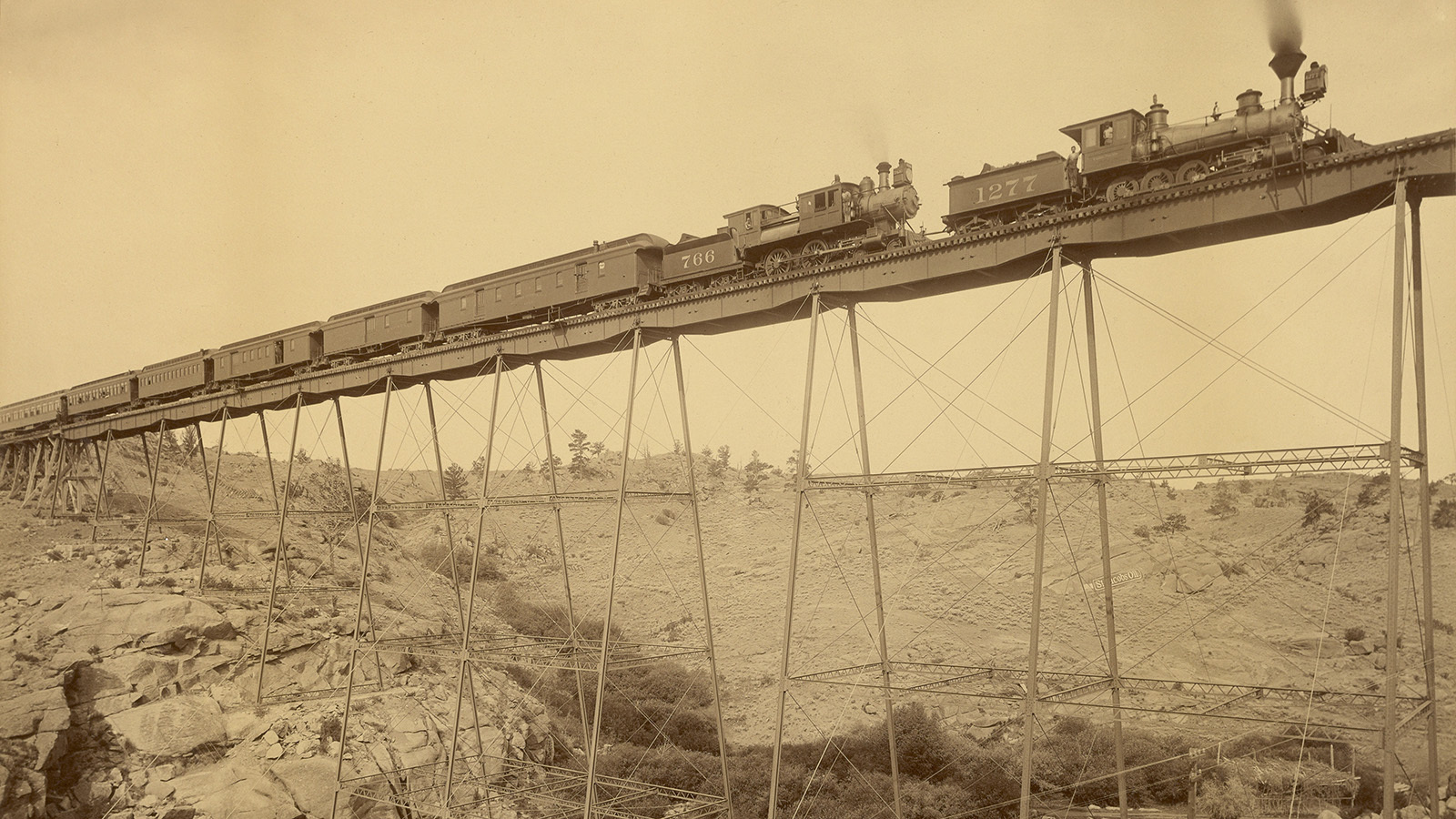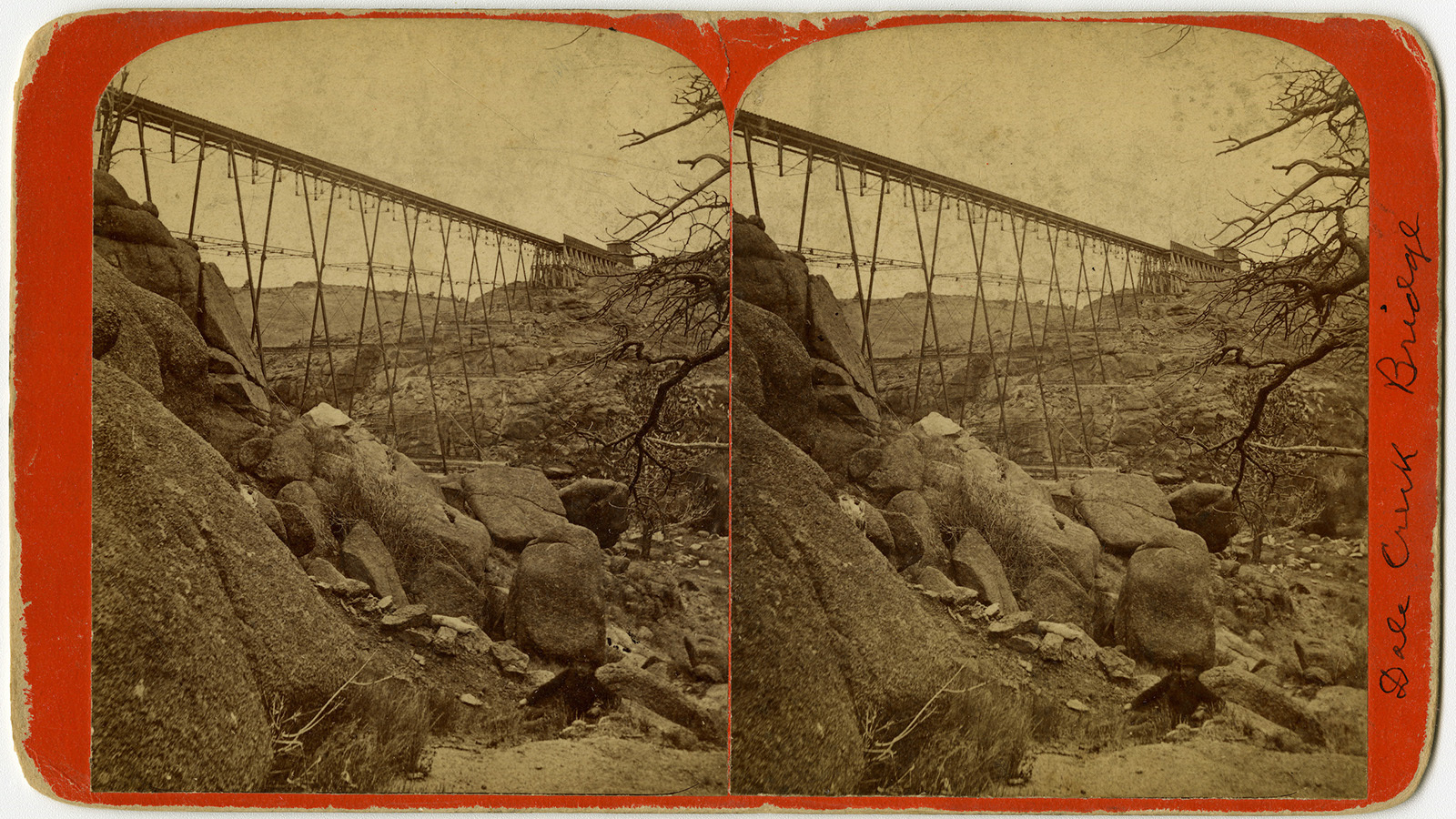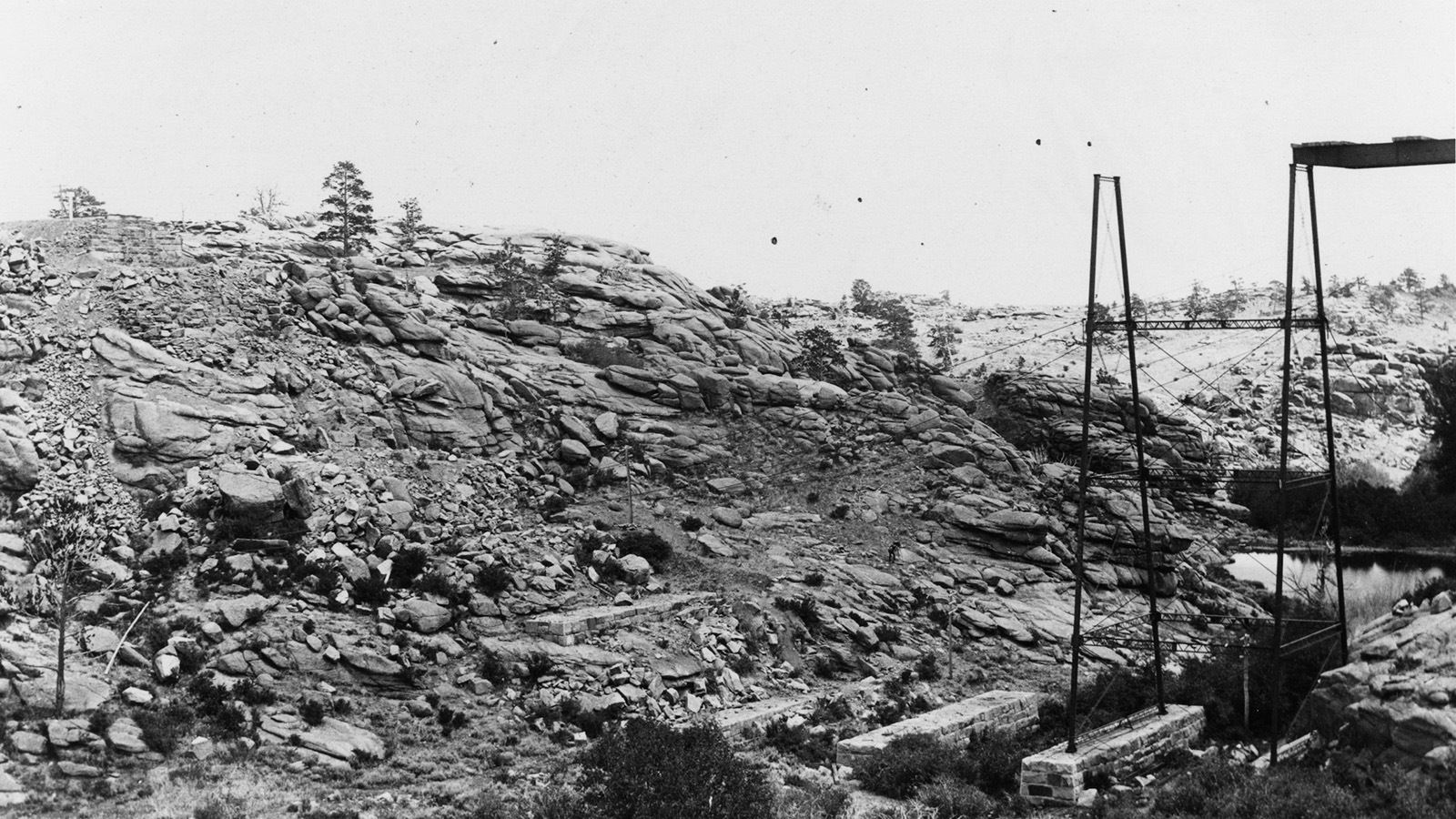Introduction
The Dale Creek Bridge, constructed in 1868 as part of the Union Pacific Railroad, stands as one of the most significant engineering achievements of the 19th century. Situated near Sherman, Wyoming, this towering bridge not only symbolized the completion of the transcontinental railroad but also highlighted the technological and environmental challenges faced by the engineers of the time. Rebuilt in 1885 using iron, the bridge became a crucial link between the East and West coasts, playing a vital role in the expansion of the American railway system.

Historical Context of the Dale Creek Bridge
The construction of the transcontinental railroad was a monumental task undertaken by the United States in the mid-19th century. This railroad connected the Pacific coast with the Atlantic, drastically shortening travel time across the country and catalyzing economic development. The Dale Creek Bridge, constructed as part of this historic project, was one of the most difficult segments to complete due to its location over a deep gorge and the harsh, windy weather conditions in the area.
The original wooden structure, completed in 1868, proved insufficient for long-term use. By 1885, it was replaced with a sturdier iron design, which reflected the technological advancements in bridge-building at the time. The new iron bridge spanned 650 feet and towered 130 feet above Dale Creek, making it one of the tallest and longest bridges on the Union Pacific Railroad.
Engineering Challenges and Risks
The design and location of the Dale Creek Bridge presented significant engineering challenges. Trains had to reduce their speed to just 4 mph when crossing the bridge, due to its great height and the vulnerability of the structure to strong winds. The absence of guardrails further added to the perilous nature of the crossing, with fears of derailment or accidents looming large for passengers and engineers alike. Special brakemen were often stationed on trains to control the speed and ensure safe passage over the bridge.

The region’s notorious high winds created hazardous conditions, and the engineers had to account for both structural stability and weather resistance. Despite these precautions, the crossing remained one of the most dreaded parts of the journey for many travelers.
Role in the Expansion of the American Railroad
Despite its risks, the Dale Creek Bridge was a vital artery in the rapidly expanding railroad network, which played a critical role in the economic development of the American West. The railroad facilitated the transport of goods, services, and people across the country, opening up vast tracts of land to settlement and commerce. The completion of the transcontinental railroad, with the Dale Creek Bridge as a key component, not only united the nation geographically but also culturally and economically.
The bridge’s construction symbolized the determination and ingenuity of the engineers who sought to overcome natural obstacles and push the boundaries of 19th-century technology.
Decommissioning and Legacy
In 1901, the Dale Creek Bridge was decommissioned, as a sturdier and safer route was developed to bypass the area. Despite its relatively short period of active use, the bridge left a lasting legacy in American industrial history. It stands as a testament to the challenges of early railroad construction and the resilience of the engineers and workers who made it possible.

Though the bridge no longer stands, the remains of its foundations can still be found at the original site near Sherman, Wyoming. These remnants serve as a historical marker for those interested in the pioneering days of the American railroad and the engineering marvels that helped shape the nation.
Conclusion
The Dale Creek Bridge was more than just a link in the transcontinental railroad—it was a symbol of American innovation and perseverance in the face of adversity. The bridge’s construction, with all its challenges, underscored the technological limitations and advancements of its era. Its role in connecting the country’s vast and diverse regions laid the groundwork for the rapid growth and development that followed. Today, it remains a powerful reminder of the triumphs of early railroad engineering and the pioneering spirit of those who made it possible.

